
Song of the Canefields
Review
This is one of the harshest, yet best, movies about the war that I have seen. You start with a man who loves to take pictures and make people smile. He has a wonderful family and lives on Okinawa.
The Japan attacks the US and, over time, one-by-one, his family members are drawn into the battle. This is not a movie where everyone meets happily at the end; there are cold, brutal deaths of some of the family.
The film is also very realistic in dealing with the times. You see the attitude of many of the Japanese of the time; for example, that they were willing to “die for the Emperor.” You also see the result of actual rumors about how horribly civilians would be treated by the Americans, which led to many civilian suicides.
The sheer carnage of war is also evident, and some of the scenes are very, very violent and upsetting.
The movie does an excellent job of showing how civilians were caught up in the madness of war, and how they reacted to it. Definitely a film that is worth seeing.
Synopsis
 |
The film has one of my favorite actresses, Nakama Yukie.
 |
The movie opens in 2003.
 |
A lot of very beautiful scenery.
 |
Two women get off the bus.
We go back in time two days.
 |
The woman had gotten upset during the singing of the song and goes to the girl's apartment (?), pounding on the door to get her attention.
 |
They examine some sugarcane plants that were bent by a recent typhoon, and the older woman explains that they will come back under their own power, just like Okinawa.
 |
We find out that the younger girl is the granddaughter of the other woman.
Apparently the granddaughter doesn't like to go to school.
 |
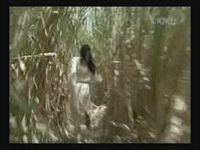 |
They think they hear some girl laughing and we see her running through the cane.
 |
So now we have a flashback to 1941.
 |
This girls name is Noriko. Isamu is the name of the guy chasing her.
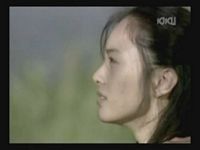 |
He asks her to marry him.
Next, we see a photographer trying to get a shot of a pretty girl.
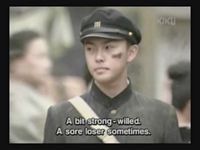 |
Isamu is one of his sons, and this boy is another. He gets into a lot of fights at school.
 |
His eldest daughter. The girl's name is Mie.
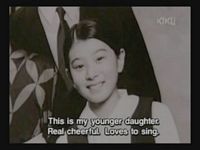 |
His youngest daughter, who likes to sing (and might be the woman singing early in the movie.)
 |
He has a third son.
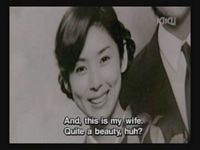 |
 |
There's a family meeting where the one son introduces the girl he wants to marry. The father acts like he's against the marriage. Actually, he's just having some fun and he approves of the marriage. Noriko plans to become an elementary school teacher.
 |
 |
Some neighbor woman runs up and tells the father to turn on the radio. An announcement is made about the attack on Pearl Harbor.
 |
The father is from Osaka. Noriko asks him why he and his wife are living in Okinawa, and he says that they eloped.
 |
Then we go further back in time to see how Isamu's parents met. It's a really neat story.
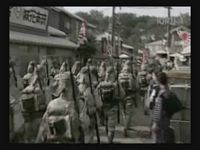 |
While they are taking pictures they hear and see a group of soldiers marching past.
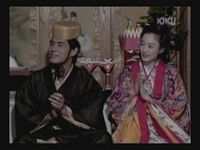 |
That night (I'm assuming) they have the wedding reception.
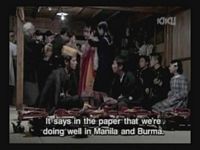 |
They are discussing the war.
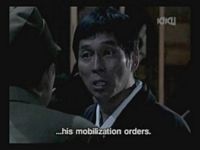 |
Isamu gets his notice to report for duty.
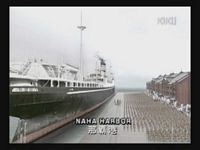 |
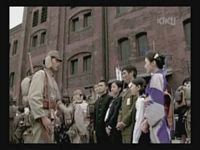 |
Most of the family is there to see him off.
 |
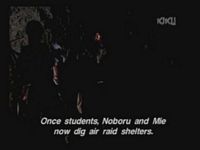 |
Spring of 1943 and Noriko has become an elementary school teacher. Air raid shelters are being dug on the island.
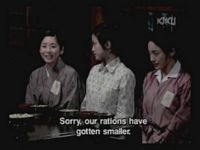 |
The movie reflects the reality of the time. Food rations kept getting reduced.
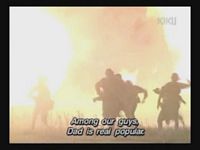 |
Isamu has sent a letter home. It sounds upbeat, but at the same time we see what he is really going through.
 |
He kills an American soldier who killed a Japanese soldier who was trying to surrender.
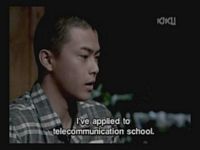 |
The middle son has applied to a telecommunications school.
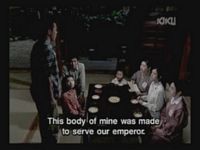 |
 |
We see the attitude of many of those in Japan of that time.
Virtually everyone has been drafted to do some kind of war-related work.
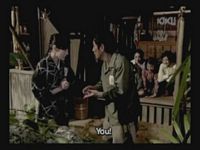 |
He finds out that his wife is pregnant.
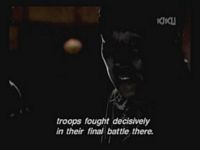 |
They find out that Saipan has fallen.
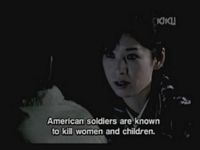 |
This is what many Japanese had been led to believe by the their media.
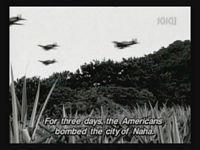 |
The American forces start to attack.
 |
The city is nearly totally destroyed.
 |
They flee the city.
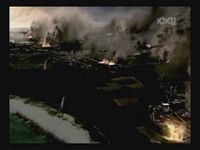 |
The American attack continues.
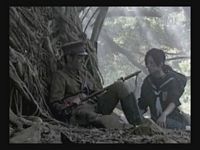 |
In the forest near the city, one guy says he never wanted to be a soldier.
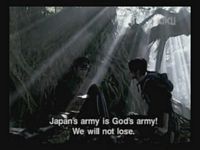 |
Another attitude common at the time.
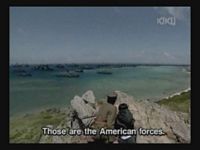 |
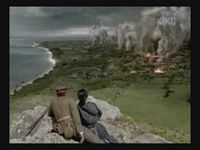 |
He takes her to a hill top to give her a glimpse of reality.
The family moves south to a place where they know someone they can move in with. The father is drafted for labor service, and the middle son visits the new home. He says he wants to join in the defense of the island. The eldest daughter plans to become a nurse. The father tells the two that they should live and not be so anxious to die for Japan, and the daughter implies he's a traitor for thinking that way.
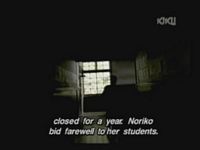 |
The situation worses and all elementary schools are closed.
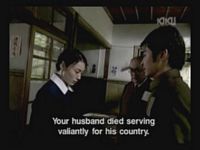 |
Isamu has died.
 |
The task is to find where the line of communication has broken down (literally.) He almost gets killed by the plane strafing. He goes a little further and sees an entire invasion fleet about to land.
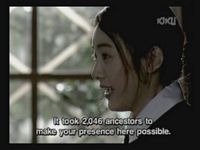 |
I'm assuming this is the last day of school.
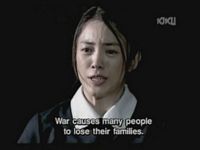 |
She then takes an anti-war position.
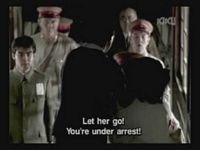 |
The secret police arrest her.
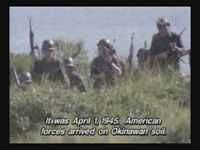 |
He's still trying to fix the wire and his bad luck holds. This time he runs directly into the invading force which are already on land.
The father has been drafted. He's with a group that gets bombed by US planes, and they take refuge in a shelter (or mine of some sort). The father is able to get the guy to change his mind about ordering the civilians to leave.
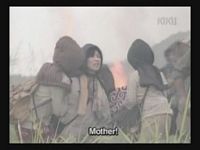 |
Elsewhere, civilians are fleeing.
 |
The eldest daughter sees her mother being brought in. She's about to give birth. The doctor refuses to treat her, though.
 |
The daughter follows the mother and finds her just in time.
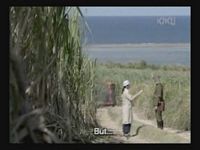 |
The soldier that helped out gives the eldest daughter a copy of Gone with the Wind.
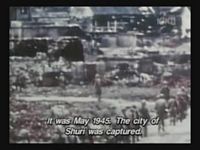 |
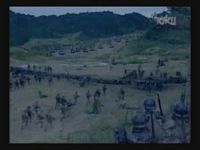 |
The father's luck isn't much better. He and the group he's in get to the scene of the battle. Notice the line of American tanks approaching.
 |
A regular army soldier tells the older guys that, since they are part of the Okinawan Defense Force and not the actual army, they can flee.
 |
They end up having to join the defense line anyway, then someone orders what I think is a typical banzai charge, where the men have no chance of surviving at all.
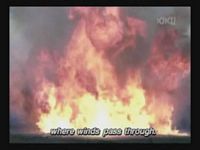 |
The film even shows the use of “human bullets,” men who had explosives on them and would rush a tank on purpose to try and blow up the tank.
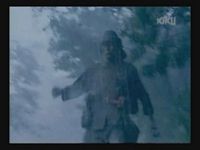 |
He runs away. There's a lot of footage in this section that is extremely gruesome. Realistic, of course, but extremely gruesome. He also finds a large group of civilian bodies.
 |
The father accidentally finds Noburu, the middle son. Noburu realizes his father ran away from the fight, but his own view on war has changed.
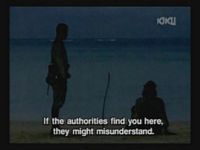 |
Noburu tells his father that he needs to go somewhere else.
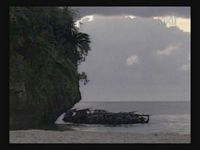 |
The next morning the US military arrives where Noboru has been stationed.
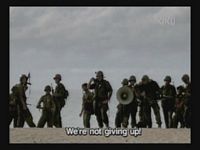 |
An interpreter tries to get the group to surrender.
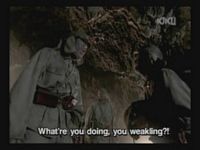 |
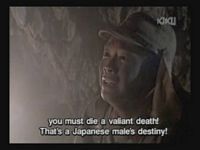 |
Their commanding officer wants them to go attack. Again, an example of the thinking of the time. It also shows how Japanese soldiers were physically beaten by their own leaders.
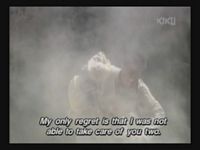 |
Noburu makes a one-man banzai charge on the US forces and is shot and killed.
 |
As the father is walking away, he hears the explosion of the satchel of explosives that Noburu was carrying.
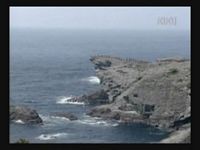 |
Kids are committing suicide rather than being taken “captive” by the US forces.
 |
Just as Mie, one of the daughters, is about to jump off the cliff, the scene shifts to where the father has arrived at the ruins of Naha. (Why doesn't he take off the military outfit? There are bound to be some clothes in the wreckage that he can change into. As it is, it's like he's walking around with a bullseye painted on him.)
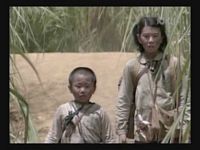 |
He gets to the canefield and finds his two youngest children. Then his wife and their new baby arrive.
 |
Unfortunately, another military group arrives and tells him to come with them.
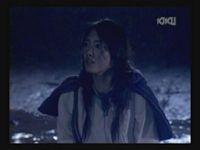 |
The mother and the kids accidentally find Noriko.
They have taken shelter. An American tank rumbles overhead.
Noriko gets into an argument with a military guy. The new baby, Sachiko, is crying and he wants the mother to make it stop.
Noriko is killed trying to protect the youngest daughter when the cave they are in comes under fire.
Again, the Americans use an interpreter to try and get the people to come out.
The mother tells the children they they are going out.
The group he's with is out on patrol and they find an injured American.
The group leader wants to kill the American. He then tells the father to kill the American. The last scene we see is the Japanese leader holding the gun to the father's head.
They find that Mie is at the camp. Apparently she did not jump off the cliff.
While at the camp Mie hears a sound and it turns out to be a bell on a charm that is on her father's camera. She asks for the camera back and the soldier gives it to her and tells her that her father is dead.
Main Index
Japan main page
Japanese-American Internment Camps index page
Japan and World War II index page
|